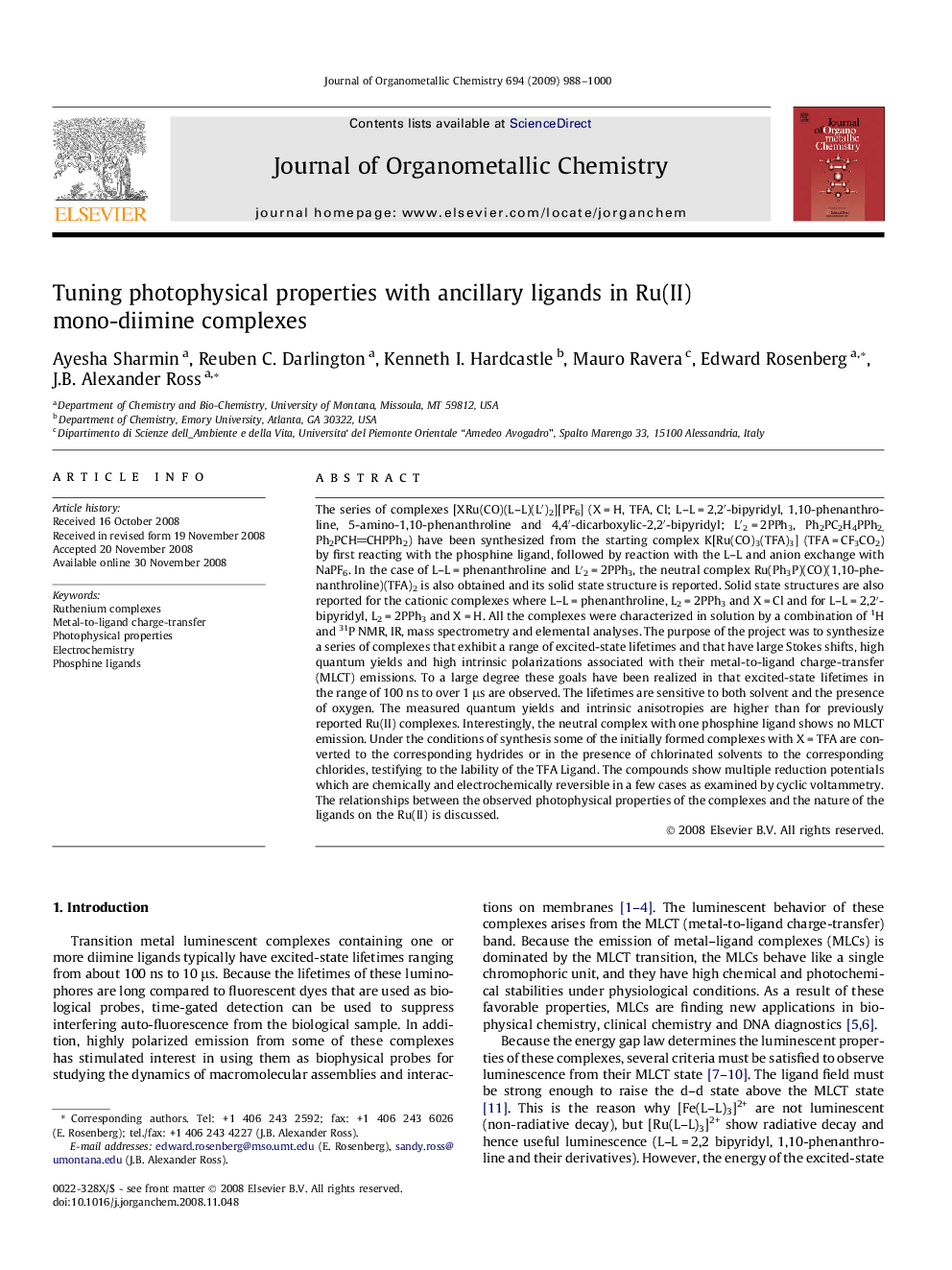| کد مقاله | کد نشریه | سال انتشار | مقاله انگلیسی | نسخه تمام متن |
|---|---|---|---|---|
| 1322876 | 977252 | 2009 | 13 صفحه PDF | دانلود رایگان |

The series of complexes [XRu(CO)(L–L)(L′)2][PF6] (X = H, TFA, Cl; L–L = 2,2′-bipyridyl, 1,10-phenanthroline, 5-amino-1,10-phenanthroline and 4,4′-dicarboxylic-2,2′-bipyridyl; L′2 = 2PPh3, Ph2PC2H4PPh2, Ph2PCHCHPPh2) have been synthesized from the starting complex K[Ru(CO)3(TFA)3] (TFA = CF3CO2) by first reacting with the phosphine ligand, followed by reaction with the L–L and anion exchange with NaPF6. In the case of L–L = phenanthroline and L′2 = 2PPh3, the neutral complex Ru(Ph3P)(CO)(1,10-phenanthroline)(TFA)2 is also obtained and its solid state structure is reported. Solid state structures are also reported for the cationic complexes where L–L = phenanthroline, L2 = 2PPh3 and X = Cl and for L–L = 2,2′-bipyridyl, L2 = 2PPh3 and X = H. All the complexes were characterized in solution by a combination of 1H and 31P NMR, IR, mass spectrometry and elemental analyses. The purpose of the project was to synthesize a series of complexes that exhibit a range of excited-state lifetimes and that have large Stokes shifts, high quantum yields and high intrinsic polarizations associated with their metal-to-ligand charge-transfer (MLCT) emissions. To a large degree these goals have been realized in that excited-state lifetimes in the range of 100 ns to over 1 μs are observed. The lifetimes are sensitive to both solvent and the presence of oxygen. The measured quantum yields and intrinsic anisotropies are higher than for previously reported Ru(II) complexes. Interestingly, the neutral complex with one phosphine ligand shows no MLCT emission. Under the conditions of synthesis some of the initially formed complexes with X = TFA are converted to the corresponding hydrides or in the presence of chlorinated solvents to the corresponding chlorides, testifying to the lability of the TFA Ligand. The compounds show multiple reduction potentials which are chemically and electrochemically reversible in a few cases as examined by cyclic voltammetry. The relationships between the observed photophysical properties of the complexes and the nature of the ligands on the Ru(II) is discussed.
The series of complexes [XRu(CO)(L–L)(L′)2]+ [PF6]− (X = H, TFA, Cl; L–L = 2,2′-bipyridyl, 1,10-phenanthroline, 5-amino-1,10-phenanthroline and 4,4′-dicarboxylic-2,2′-bipyridyl; L′2 = 2PPh3, Ph2PC2H4PPh2, Ph2PCHCHPPh2) have been synthesized from the starting complex K+ [Ru(CO)3(TFA)3] (TFA = CF3CO2). The complexes exhibit a broad range of useful photophysical properties, very complex electrochemistry and a tendency to lose the TFA ligand with conversion to the corresponding hydride or chloride.Figure optionsDownload as PowerPoint slide
Journal: Journal of Organometallic Chemistry - Volume 694, Issue 6, 15 March 2009, Pages 988–1000